Diving Into World War II
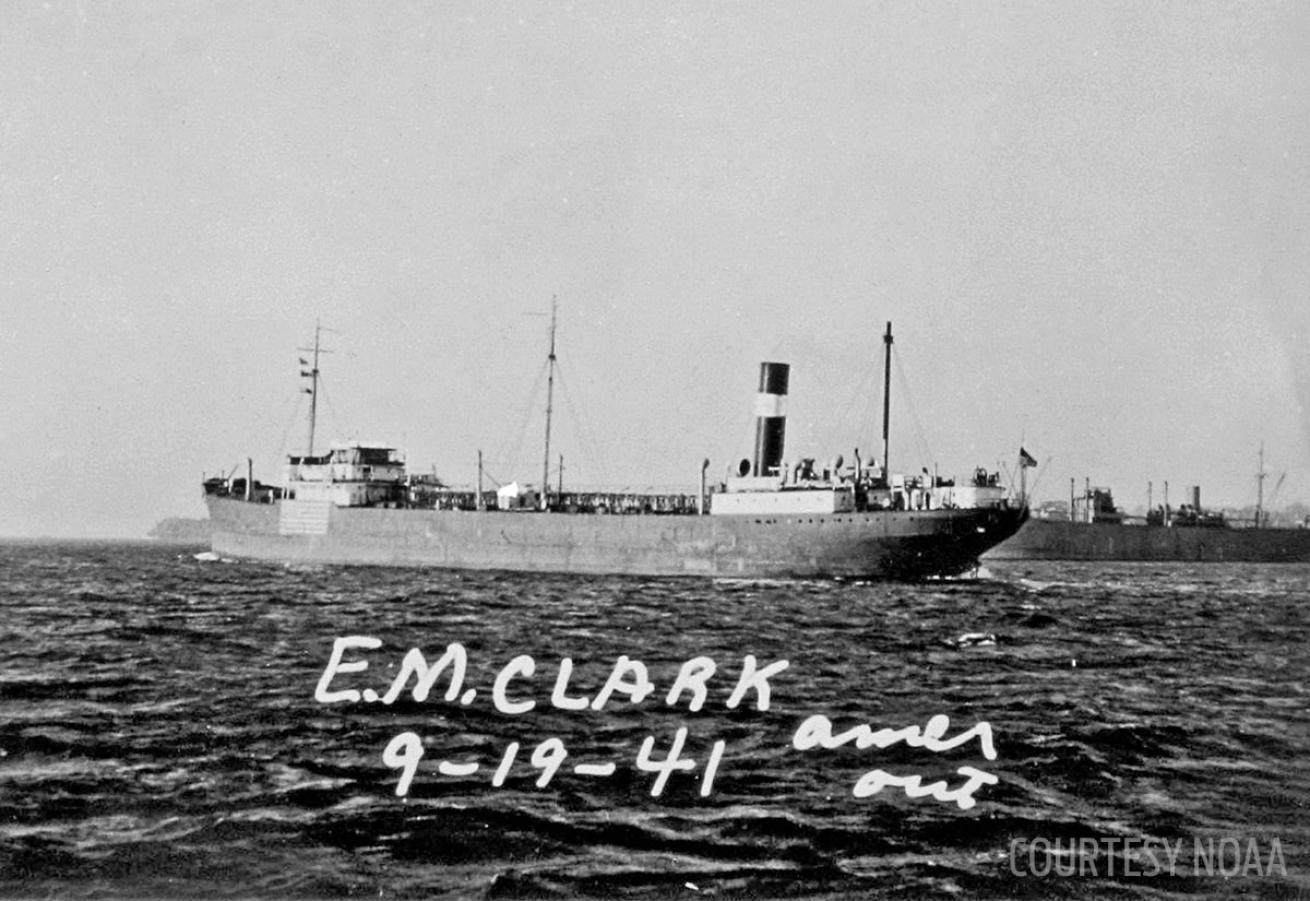
NOAAE.M. Clark 1941
Americans often think of World War II as something that happened “over there.” In reality, German U-boats began patrolling the U.S. coast soon after Pearl Harbor, sinking more than 80 ships in 1942 off North Carolina alone, taking the lives of more than 1,600 men. One of those ships was the freighter SS Bluefields, sunk by the German submarine U-576 in the attack on Convoy KS- 520 about 30 miles off Cape Hatteras, North Carolina, in July 1942. The convoy and its military escort fought back, sinking the sub — today, the vessels lie more than 700 feet deep, within 250 yards of one another.
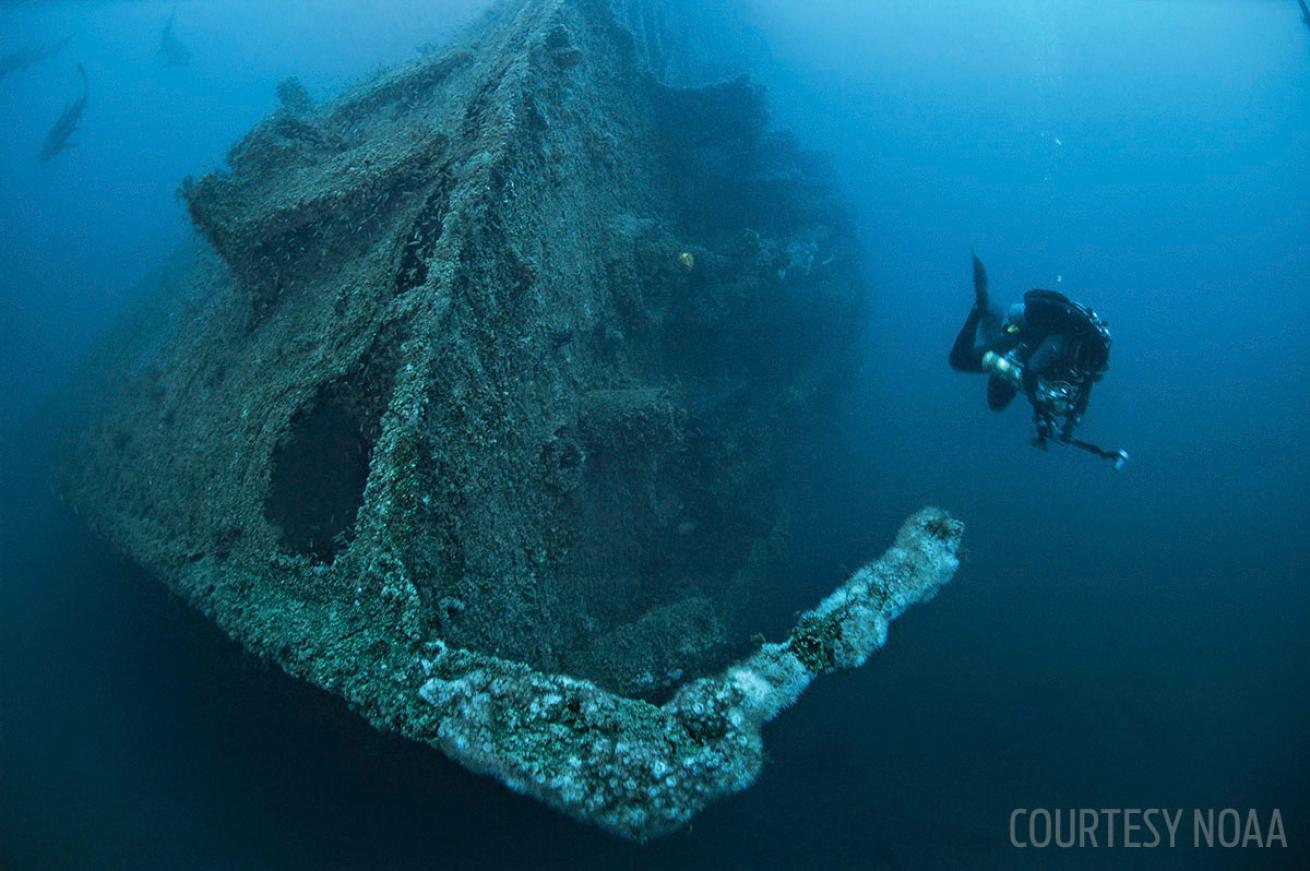
NOAAE.M. Clark
This wreck is the most intact World War II-era tanker off North Carolina. It sank 10 minutes after being torpedoed and rests on its port side at a depth of 260 feet.
Last summer, scientists and researchers with NOAA, the National Marine Sanctuaries and others embarked on a survey, for the first time, of the remains of both ships, part of the Battle of the Atlantic: Archaeology of an Underwater WWII Battlefield expedition.
The goal was to conduct a comprehensive evaluation of the shipwrecks and the surrounding battlefield — along with related WWII shipwrecks lost in the area— using advanced technologies to tell the story of America’s watery WWII battlefields.
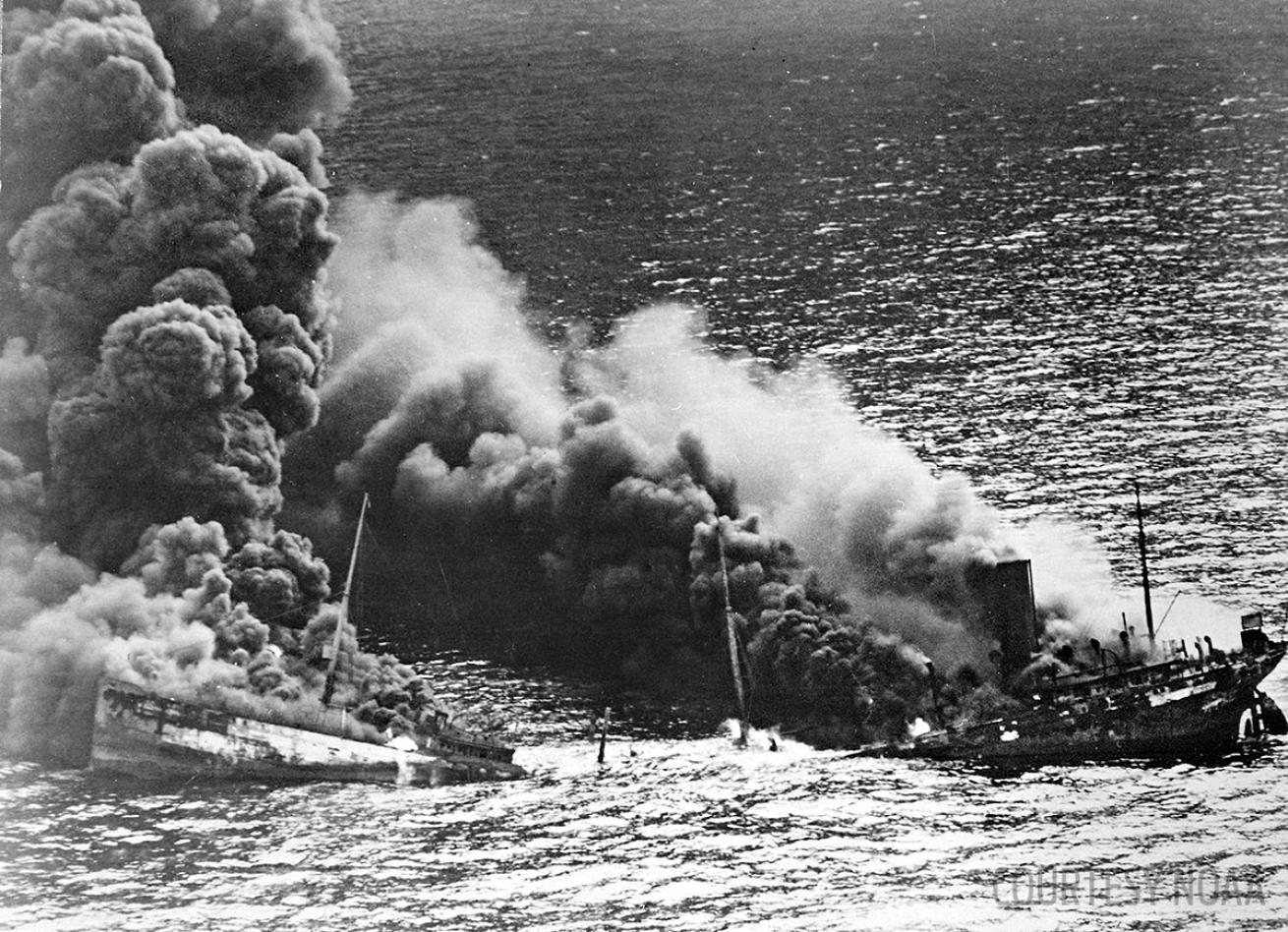
NOAADixie Arrow
The crew of this oil tanker was unprepared for the sudden attack of U-71 15 miles south of Hatteras Inlet. The shipwreck rests upright and intact in 90 feet of water.
It also revealed information about never-before dived sites. Team members from Project Baseline, a global network of divers working to create a visual record of conditions underwater, conducted the first-ever dives to the yard patrol ship YP-389, another 1942 casualty lying nearby at about 330 feet. They created a photogrammetric model and a tally of artifacts that will help track future human impacts at the site. Project Baseline’s manned submersibles Nemo and Nomad also allowed expedition members a first-ever look at the remains of U-576.
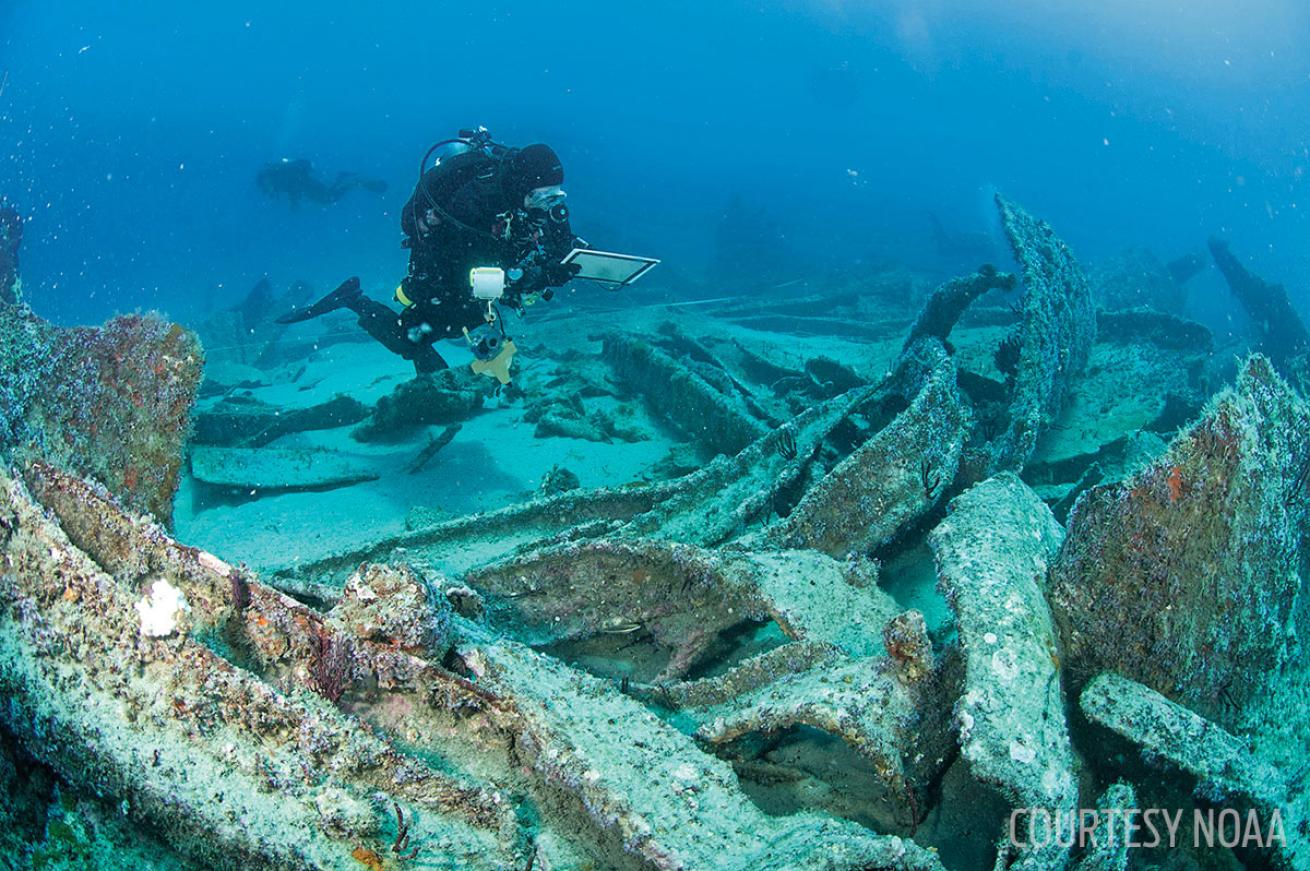
NOAAAshkhabad
This Russian tanker fell prey to U-402. While all hands survived, the ship now lies at 60 feet, and the remains have been scattered to remove shipping hazards.
Scuba divers sometimes mistakenly believe National Marine Sanctuaries projects are meant to close sites to divers, but in fact, the opposite is true. “The convoy battle is part of a bigger system of wrecks that are divable,” explains Joe Hoyt, a NOAA sanctuary scientist and chief scientist for the expedition. NMS wants to expand its 1-square-mile Monitor National Marine Sanctuary — site of the USS Monitor, one of America’s most famous divable wrecks — to include the larger battlefield area, which includes wrecks already popularly dived. “We’re trying to provide an additional level of protection,” says Vernon Smith, NMS national media coordinator, “to ensure access forever.” Data gathered on expeditions like this one help make the case for such expansion.
“When the government comes in to manage a site, people think it’s about what can’t we do,” Hoyt says. “We look at it as, what can we do?” Research helps establish things important to divers, like reliable, feature driven site maps and best places for mooring buoys.
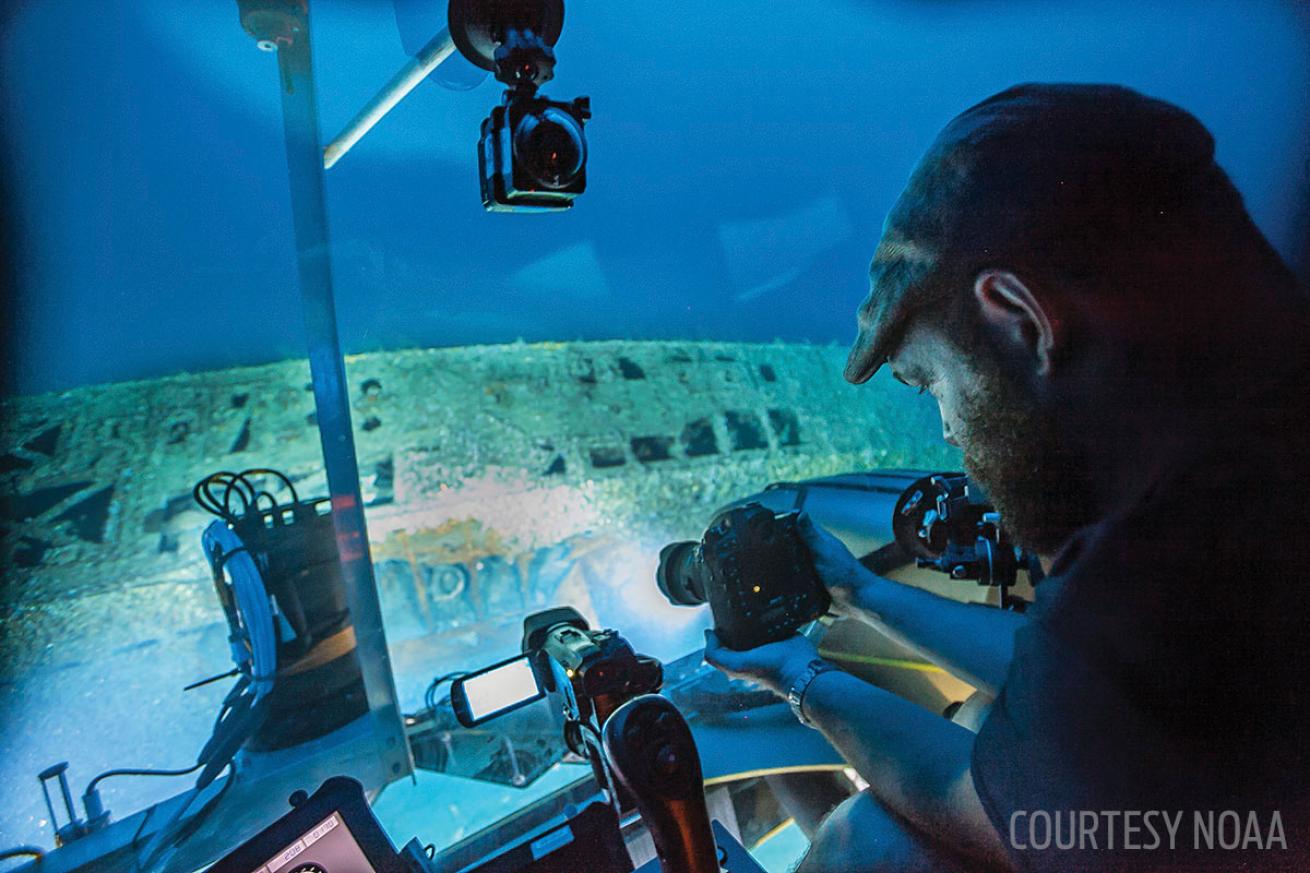
NOAAA maritime archaeologist with NOAA documents the damage to U-576.
Other accomplishments of the expedition include a complete laser-scanning survey on both U-576 and Bluefields that is expected to yield accurate 3-D models “down to the millimeter”; photogrammetric modeling; and successful testing of data-collection methods.
These battlefield sites are more than recreational — they’re war graves, a sacred part of our shared past. Says Hoyt, “Our job as cultural resource managers is to put that in the context of human history.”
DIVE DEEPER: To learn much more about Battle of the Atlantic: Archaeology of an Underwater World War II Battlefield and more NOAA Ocean Explorer projects, go to oceanexplorer.noaa.gov.










